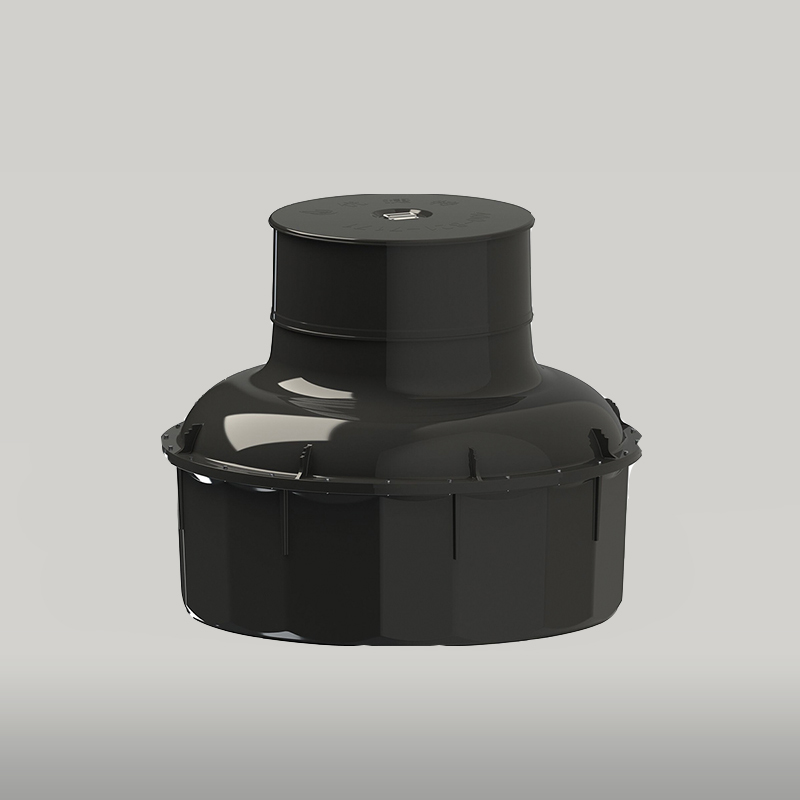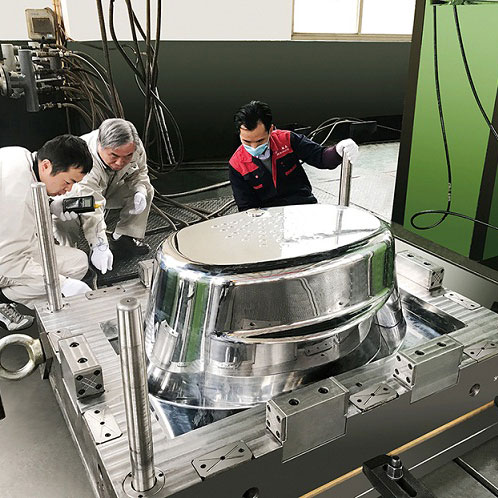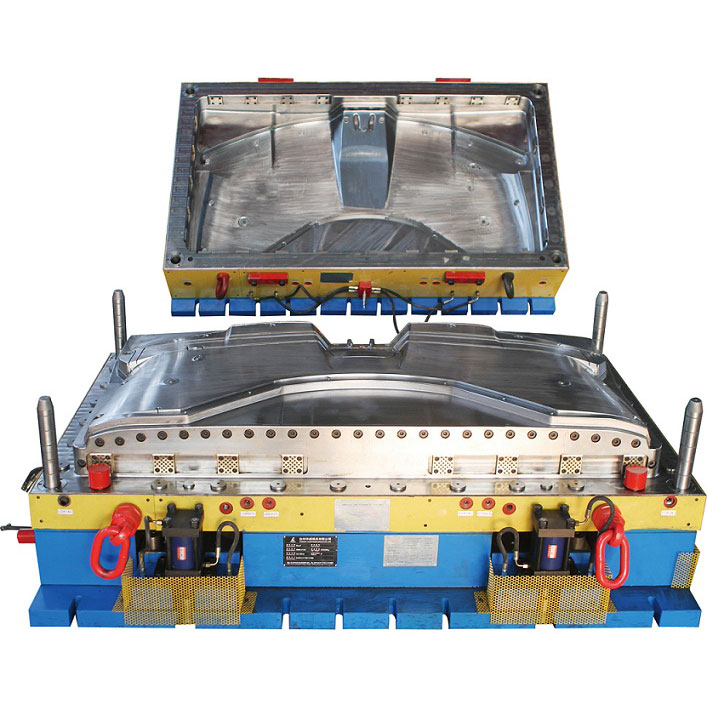|
Problem
|
Causes
|
Solutions
|
|
Adhesive mold
(Materials or products stick to the surface of the mold, causing local roughness of the product)
|
1. Poor surface smoothness of the mold
2. The material shrinkage rate is too large or too small
3. Excessive pressure
4. The ejection rod of the mold is not parallel
|
1. Increase the smoothness of the mold
2. Improve the shrinkage performance of materials
3. Properly reduce the molding pressure
4. Check if the ejector rod is balanced
|
|
Material shortage and porosity
(Insufficient filling, there are pores on the edges or opposite sides of the injection port of the product)
|
1. Insufficient pressure
2. Insufficient exhaust
3. The mold temperature is too high or too low
4. Insufficient material quantity
5. Pressing speed too fast or too slow
|
11. Increase pressure appropriately
2. Increase the number of exhausts
3. Adjust the mold temperature
4. Add materials
5. Adjust the speed of mold closing
|
|
Warping and deformation
(Uneven phenomena such as bending and deformation occur after the product is molded)
|
1. Short holding time and insufficient assimilation
2. The material shrinkage rate is too large
3. The mold temperature is too high
4. Unstructured after mold release
|
1. Increase pressure holding time
2. Change the material shrinkage rate
3. Adjust the mold temperature appropriately
4. After molding, shape the product until the temperature drops
|
|
Carbonization
(Unexhausted gas burns at the edges and corners of the product, causing the area to turn black.)
|
1. There are dead corners in the mold
2. Insufficient exhaust
3. The mold temperature is too high
|
1. Improve the exhaust of the mold
2. Increase the number of exhausts
3. Reduce mold temperature
|
|
Problem causes and solutions
Adhesive mold (material or product adheres to the surface of the mold, causing local roughness of the product)
|
1. Insufficient curing and mold temperature discomfort
2. Excessive material shrinkage rate
3. Unbalanced ejection of the ejection rod
4. Improper temperature of the embedded parts
5. The surface of the mold is not smooth and clean
|
1. Increase curing time and adjust mold temperature
2. Adjust the shrinkage rate of the material
3. Check if the ejector rod of the mold is parallel
4. Proper preheating of inserts
5. Increase the surface smoothness of the mold
|
|
Blistering, bubbling
(The surface of the product protrudes after demolding.)
|
1. The mold temperature is too low and the curing is not sufficient
2. There is moisture in the material
3. The mold temperature is too high
|
1. Increase mold temperature and increase curing time
2. Check the moisture detection of raw materials
3. Reduce the temperature of the mold
|
|
White dots
(There are varying numbers of white spots on the surface of the product)
|
1. The progress of mold closing is too slow
2. The mold temperature is too high, and the material has been pre cured after being placed
3. Too many deflation times and times
|
1. Quick mold closing after feeding
2. Reduce mold temperature
3. Quickly exhaust after mold closing and reduce the number of exhausts
|
|
Joint
(There are seams at the joint of the product at the corners or opposite the injection port)
|
1. The mold temperature is too high or too low
2. The closing speed is too fast or too slow
3. Insufficient curing
|
1. Adjust the mold temperature
2. Accelerate or slow down the closing speed of the mold
3. Increase curing time
|
 English
English
 English
English  ελληνικά
ελληνικά  Esperanto
Esperanto  Afrikaans
Afrikaans  tiếng Việt
tiếng Việt  Català
Català  Italiano
Italiano  שפה עברית
שפה עברית  Cymraeg
Cymraeg  العربية
العربية  Galego
Galego  Latviešu
Latviešu  Română
Română  icelandic
icelandic  ייִדיש
ייִדיש  Hrvatski
Hrvatski  Kreyòl ayisyen
Kreyòl ayisyen  Srpski језик
Srpski језик  Shqiptar
Shqiptar  Slovenski
Slovenski  lugha ya Kiswahili
lugha ya Kiswahili  አማርኛ
አማርኛ  Malti
Malti  Bosanski
Bosanski  Frysk
Frysk  ភាសាខ្មែរ
ភាសាខ្មែរ  ქართული
ქართული  ગુજરાતી
ગુજરાતી  Hausa
Hausa  Кыргыз тили
Кыргыз тили  ಕನ್ನಡ
ಕನ್ನಡ  Corsa
Corsa  Kurdî
Kurdî  Lëtzebuergesch
Lëtzebuergesch  Malagasy
Malagasy  मराठी
मराठी  മലയാളം
മലയാളം  Maori
Maori  Hmong
Hmong  IsiXhosa
IsiXhosa  Zulu
Zulu  سنڌي
سنڌي  Shinra
Shinra  Հայերեն
Հայերեն  日本語
日本語  한국어
한국어  Punjabi
Punjabi  Chichewa
Chichewa  Samoa
Samoa  Sesotho
Sesotho 



